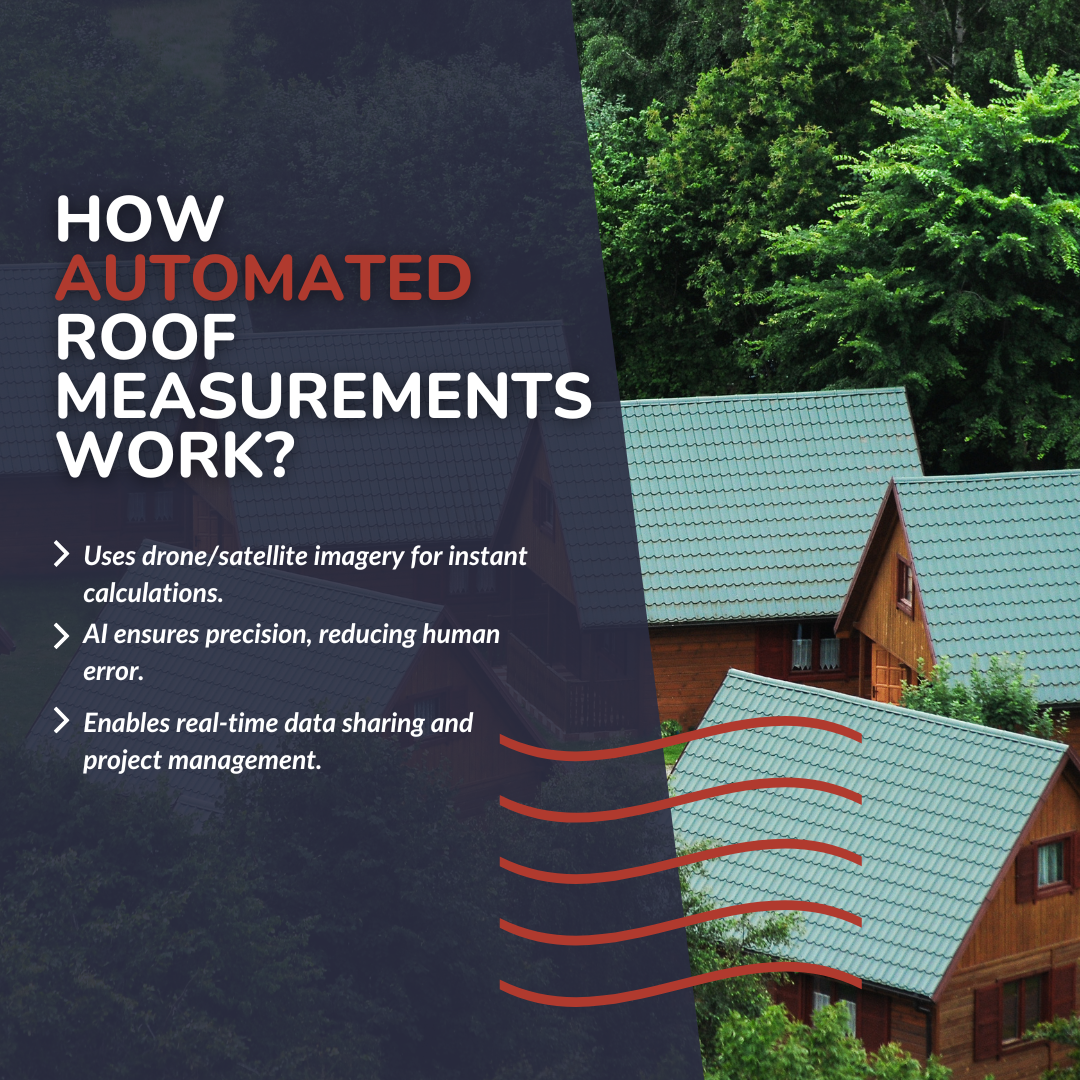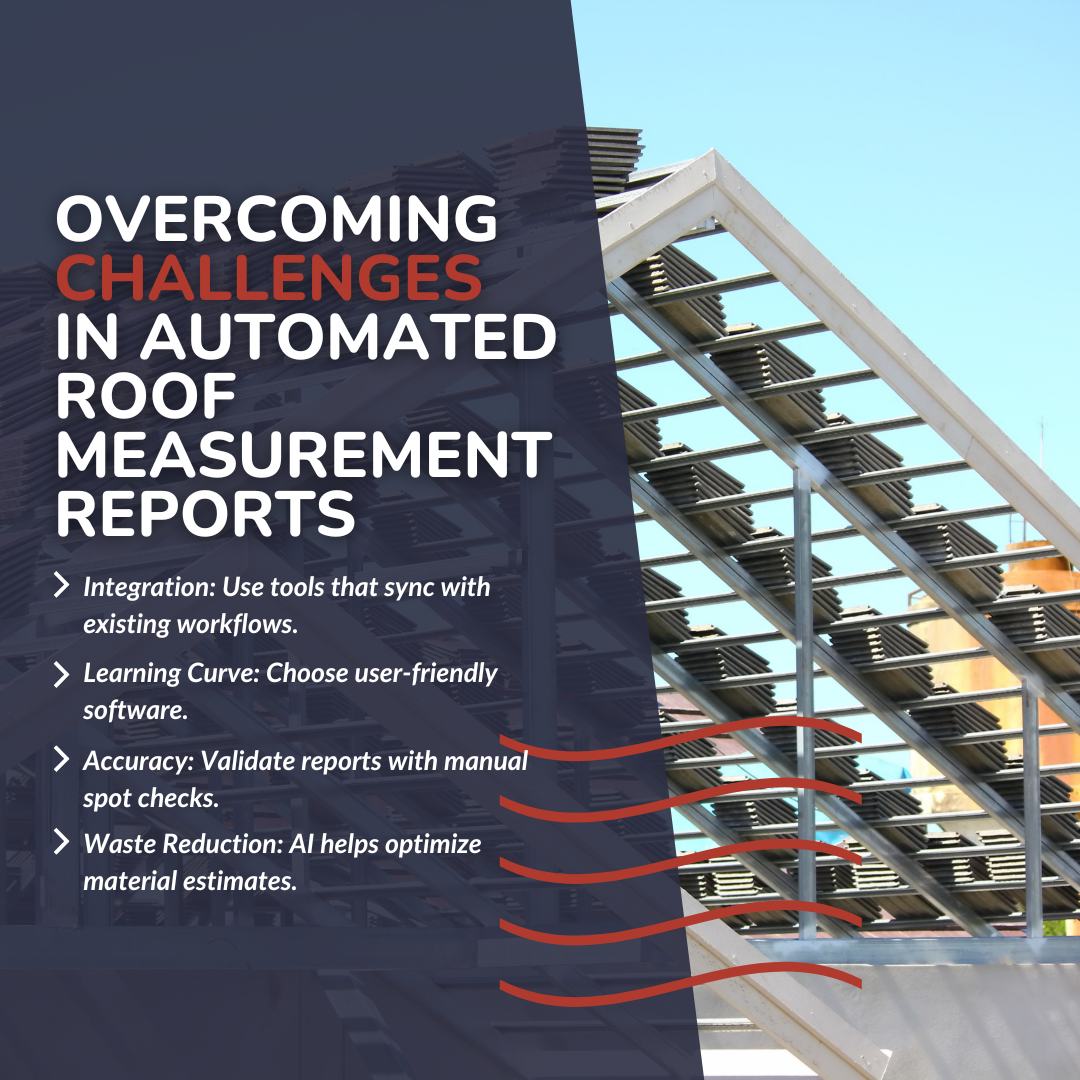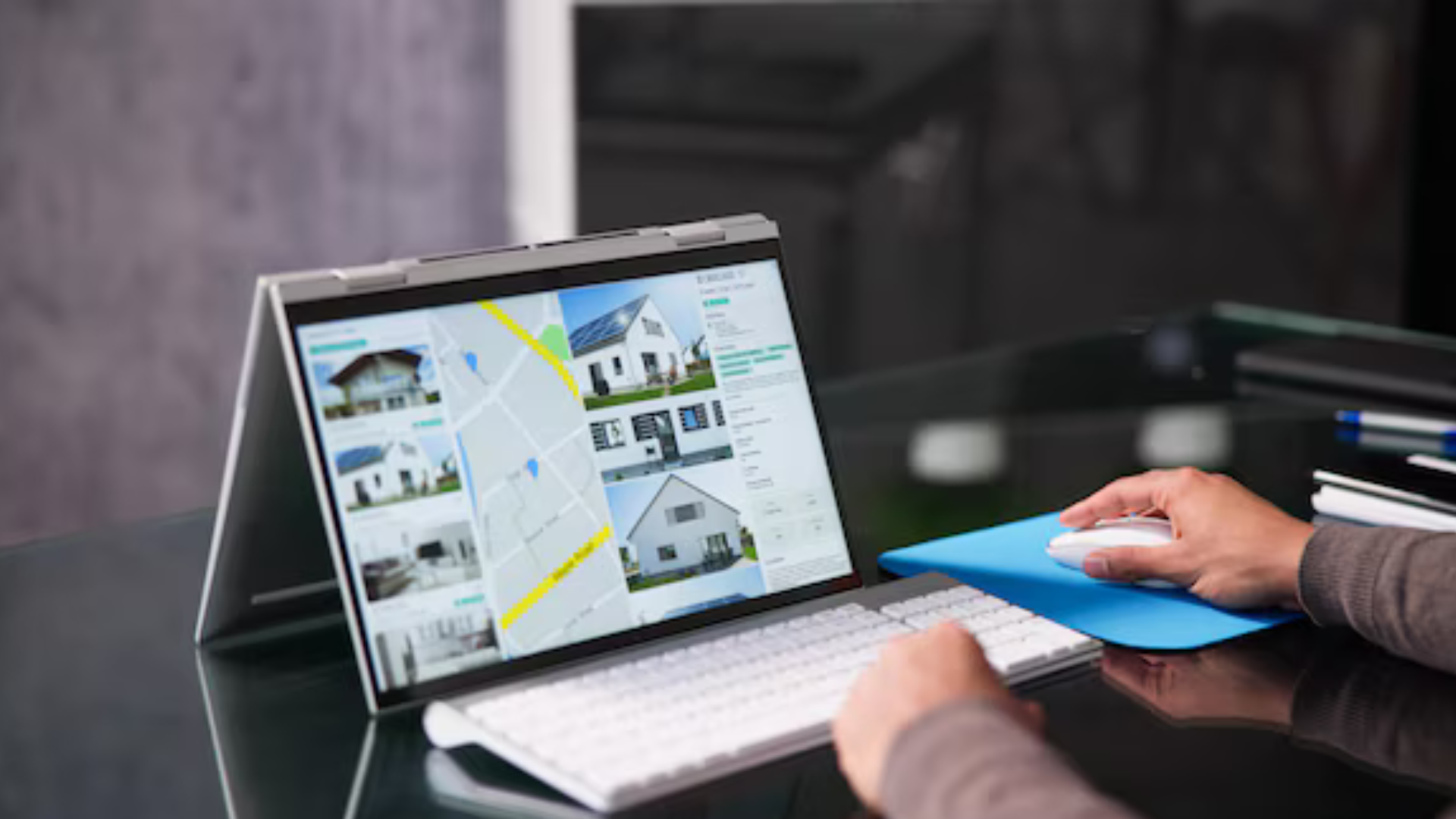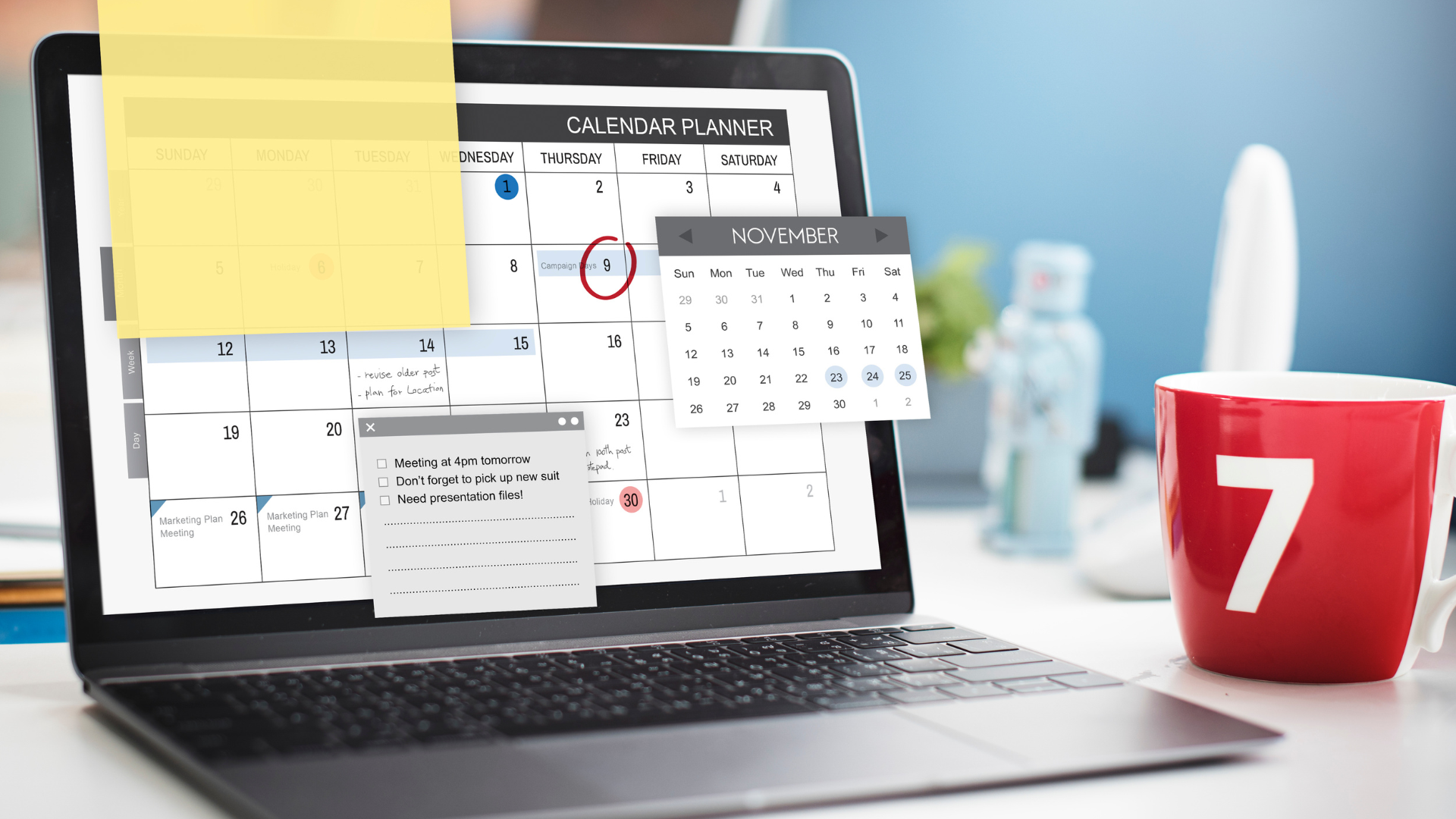March 17, 2025
Imagine spending hours climbing ladders, fighting unpredictable weather, and manually calculating measurements only to find an error that can cost you time, materials, and money.
Roofing contractors have faced this challenge for decades. However, roofing technology has evolved significantly today.
With roofing software, contractors can generate precise reports without stepping on a roof.
This blog will explore the differences between manual and automated measurements and what can better serve your business.
Key Takeaways
- Roof measurements are critical for roofing projects' accuracy, efficiency, and cost control.
- Manual measurements require skill but can be time-consuming and prone to errors.
- Automated measurements use aerial imagery and AI-powered tools for accurate roof measurements
- RooferBase offers an all-in-one roofing solution to streamline measurements, project management, and customer interactions.
- Roofing companies that leverage technology can increase efficiency, reduce waste, and scale their business.
Roof Measurement Basics: How Do Manual and Automated Methods Work?
Roof measurements are the foundation of every successful roofing project; whether you're replacing a roof, estimating costs, or ensuring the quality of roofing materials, accurate measurements matter.
Traditionally, roofers relied on manual tools, but technological advancements have made automated methods increasingly popular.
But are they really better? Let’s explore how both approaches work.
How Manual Roof Measurements Work?

Manual measurements require you to be present at the job site using traditional tools. This method of measuring has its own drawbacks and benefits. Let's explore them further.
1. Traditional Measuring Tools
Manual roof measurement requires tools such as tape measures, chalk lines, and ladders. Roofers physically measure the length, width, and slope of the roof before calculating the total square footage.
2. Accuracy and Skill Dependency
Manual measurements can be highly accurate when performed by an experienced professional. However, they rely on skill and precision. A small miscalculation can lead to wrong material estimates, especially when determining the roof pitch.
3. Time and Safety Concerns
Manual measurements take significantly more time than automated methods. Climbing onto a roof has safety risks, particularly on steep or multi-level structures. Falls remain one of the leading causes of construction-related injuries.
4. Weather Considerations
Manual measurements can be done in any weather condition. Unlike automated methods that rely on aerial imagery, manual tools don’t require clear skies. However, rain, wind, or snow can make climbing onto a roof dangerous.
How Automated Roof Measurements Work?

Imagine getting precise roof measurements in minutes without ever stepping foot on the roof. Here’s how automated roof measurements are changing the game.
1. Aerial Technology and AI-Powered Software
Automated roof measurements rely on high-resolution aerial imagery, drone technology, and AI-powered software to capture roof dimensions quickly and accurately.
2. Instant Reports Without Climbing a Ladder
Instead of spending hours measuring by hand, you get a detailed roof report in minutes, including total square footage, slope, and pitch. The software does all the calculations for you, reducing the chances of human error.
3. Improved Safety and Efficiency
Because automated tools don’t require you to climb on the roof, safety risks are nearly eliminated. You can measure multiple properties daily without stepping on a single ladder.
4. Weather Limitations
The only downside? Bad weather can affect image quality. The measurements might not be as accurate if the roof is covered in snow, trees, or shadows. That’s why some contractors still double-check using manual methods.
Take a look at How roofing management software can help with Estimating and Quoting in the Roofing Industry.
Key Features: What Makes Manual vs. Automated Roof Measurement Tools Different?
Not all measurement tools are created equal. While manual methods require skill and patience, automated tools rely on cutting-edge technology to improve efficiency.
Here’s a closer look at what sets them apart.
> Manual Roof Measurement Key Features:
- Uses measuring tools like tape measures and ladders.
- Requires manual calculations, making it time-consuming.
- Works for all roof structures, including sloped roofs and flat roofs.
> Automated Roof Measurement Key Features:
- Uses drone and satellite images to generate roof measurement reports.
- AI-driven technology ensures precise measurements with minimal errors.
- Allows for real-time data sharing and improved project management.
Aerial Measurements vs. Manual Calculations: A Side-by-Side Comparison.
Let's compare manual and automated roof measurements side by side to truly understand the difference. Which method wins in terms of accuracy, cost, and scalability?
| Feature | Manual Roof Measurements | Automated Aerial Measurements |
|---|---|---|
| Accuracy | Prone to human error | AI-powered precise calculations |
| Speed | Time-intensive, requires manual calculations | Quick, generates roof measurement reports |
| Environmental Impact | No direct impact | Reduces waste and improves material efficiency |
| Cost | Low initial cost, but higher labor costs over time | Higher upfront investment, but saves time in the long-term |
| Scalability | Limited by workforce availability | Can handle multiple roofing projects simultaneously |
Which Method Can Help You Better?

Both methods have their own use cases, so which one can help you better: Manual, Automated, or Hybrid?
> Best Cases for Manual Roof Measurements
Manual methods might be better if you’re working on a small repair job or need to measure a roof with complex angles.
Sticking with manual measurements is also the best option in areas where automated tools aren't available.
> Best Cases for Automated Roof Measurements
Automated tools are best for large-scale projects, insurance claims, or fast estimates.
Switching to digital measurements is a no-brainer if you want to save time, improve accuracy, and scale your business.
> Why Use a Hybrid Approach?
Many roofing companies find that combining both methods is the best solution.
Automated tools provide quick and accurate measurements, while manual verification ensures precision for complex jobs. This hybrid approach saves time, increases accuracy, and keeps operations flexible.
Must read: Roofing Software: The Key to Accurate Estimates and Increased Profits.
Overcoming Challenges in Automated Roof Measurement Reports

Switching to automated tools isn't always seamless. From the learning curve to technology failures, here are the biggest challenges contractors face and how to solve them.
1. Project Management Concerns: Integrating Roof Measurement Reports with Existing Workflows
One of the contractors' biggest challenges is making automated reports work within their current processes. If reports aren’t formatted correctly or don’t sync with estimating software, they can create more work instead of saving time.
How to solve it?
- Choose software that integrates seamlessly with your existing project management and estimating tools. Many platforms offer API connections that allow data to flow smoothly between systems.
- Standardize report formats so all team members can quickly interpret the information.
- Train your team on incorporating automated reports into their workflow, ensuring they know how to use them for estimates, material orders, and customer presentations.
When reports fit naturally into your process, they enhance efficiency rather than create bottlenecks.
2. Learning Curve: Making Digital Tools Easier for Roofing Contractors
Adopting new technology can be frustrating, especially for contractors used to traditional methods. If the software isn’t user-friendly, teams may resist using it, slowing
down the transition.
How to solve it?
- Look for tools designed with contractors in mind, simple interfaces, mobile-friendly options, and easy-to-read reports.
- Offer hands-on training sessions and tutorials to help team members get comfortable with the software.
- Start with a hybrid approach, using automated reports alongside manual methods until your team gains confidence.
The easier the tool is to use, the faster your team will adopt it.
3. Environmental Impact: How Aerial Imagery and Roofing Software Reduce Waste
Traditional roof measurements often lead to material waste due to human error. Ordering too much or too little can be costly and environmentally damaging. Automated tools help minimize waste by improving accuracy.
How to solve it?
- Use high-precision aerial imagery and AI-powered measurements to get exact material estimates.
- Integrate reports with ordering systems to ensure you’re purchasing the right amount.
- Reduce unnecessary trips to job sites using digital measurements before sending a crew.
Less waste means lower costs and a more sustainable roofing process.
Did you know? Up to 30% of all building materials delivered to a typical construction site can be wasted due to various factors, including inefficiencies and poor planning.
4. Technology Failures: Validating Measurement Reports for Accuracy
Automated tools are powerful, but they aren’t foolproof. Inaccurate reports, software glitches, or missing data can throw off project estimates and lead to costly mistakes.
How to solve it?
- Cross-check reports using multiple sources, such as drone footage or manual spot checks.
- Understand your software’s limitations. Some tools struggle with shaded areas or complex roof structures.
- Keep your software updated to benefit from the latest improvements in accuracy.
- Train your team on proper usage to minimize user errors.
- Work with a trusted provider that prioritizes precision and reliability.
Technology should make your job easier, not harder, so take steps to validate reports and ensure accuracy.
See How Roofers Can Save Time with Roofing Automation Tools.
Introducing Rooferbase: The All-in-One Roofing Solution

Running a roofing business isn’t just about measuring roofs. You must manage leads, schedule jobs, send proposals, and keep everything running smoothly. That’s where Rooferbase can help:
- Instant, Accurate Roof Measurements & Estimates – No more guesswork. Our tools accurately calculate material and labor costs, saving time and reducing errors.
- CRM & Lead Management – Keep track of customers, follow up on leads, and never lose touch with potential clients. Everything’s organized in one place.
- Fast, Professional Proposals with Digital Signatures – Send customized proposals in minutes, complete with e-signature options for quick approvals. Close more deals faster.
- Easy Appointment Scheduling & Reminders - Let customers book appointments online and receive automated reminders so you don’t waste time on no-shows.
- Real-Time Data Sharing & Insights – Keep your team in sync and make smarter business decisions with instant access to project updates and analytics.
With RooferBase, you’ll save time, close more deals, and scale your business effortlessly. Say goodbye to manual work and hello to smoother, more profitable operations.
Wrapping Up
Both manual and automated measurements have their place in the roofing industry. The key is knowing when to use each method or how to combine them for the best results.
- Manual roof measurements are reliable, but they take time and effort.
- Automated measurements provide speed, accuracy, and safety but require an upfront investment.
The best approach? A combination of both, using roofing software for efficiency and manual verification for accuracy.
About Rooferbase
Whether you're looking to reduce costs, increase efficiency, or improve customer satisfaction, Rooferbase has the necessary tools.
FAQs
1. Which method is more cost-effective: manual or automated measurements?
Although automated measurement tools may involve an initial investment, they ultimately save time and lower labor costs, making them more cost-effective over multiple projects in the long run.
2. What is the best tool for measuring roofs?
For precise roofing measurements, you can choose between manual and automated tools. Automated solutions, such as roofing software powered by aerial imagery and satellite images, provide highly accurate measurements while reducing manual work.






